The Polish President who perished on April 10, 2010 in the air crash along with the top hierarchy of that country was on his way to pay homage to 22000 Poles massacred in cold blood by the red Army of Stalin. Known as the Katyn massacre, it was a mass murder of Polish intelligentsia in 1940 approved by the entire Soviet Politburo including Joseph Stalin and Lavrentiy Beria. A memorial was, later erected, as homage to the victims of the massacre.
The Genocide of the Jews at the hands of the Nazis is fresh in the cumulative memory of the world. The Jews observe January 27 as the Memorial Day for the victims of the Nazi Holocaust, to coincide with the liberation of the Auschwitz concentration camp. Following ceremonies across Europe on Sunday 27th January, 2002 to mark the Holocaust Memorial Day, the BBC carried out an online discussion whether it was necessary to observe a Memorial Day for the victims of the Nazi Holocaust. Majority of participants affirmed that there was a need for a Holocaust Day, to pay respect to those who died and suffered at the hands of those madmen who wanted to control man's destiny. The dominant view favoured remembering all genocides in history, including the massacre of Armenians in the last century. They hadn't threatened anybody and the aim of the Ottoman Empire was the total destruction of their race. One and a half million Armenians perished in the most atrocious way.
The Council of Europe Parliamentary Assembly by its Resolution of April 24, 1998 recognised the genocide of the Armenians. The Resolution read: "Today we commemorate the anniversary of what has been called the first genocide of the 20th century, and we salute the memory of the Armenian victims of this crime against humanity." Over 135 memorials, spread across 25 countries, commemorate the Armenian Genocide. A memorial was built at Tsitsernakaberd in Yerevan, Armenia. The 44-metre stele (stone pillar with inscriptions) symbolizes the national rebirth of Armenians. At the center of the circle there is an eternal flame. Each April 24, hundreds of thousands of people walk to the genocide monument and lay flowers around the eternal flame. Herein, there is a message for Hindus.
There is no tragedy of greater magnitude on the planet than that suffered by the Hindus. Millions of innocent men, women and children were brutally butchered by fanatic marauders on religious arid racial grounds. India passed through worst genocidal phases in human history over a millennium, at the hands of Muslim invaders, followed by the Christian carnage of Hindus at the hands of the Portuguese. Historians, generally, skirt around these spells of mass tragedies for fear of offending the Muslims; those who write objectively are branded as communal. Objective teaching of history in educational institutions is not part of the educational ethos. The martyrdom of millions of innocent Hindus, who died for their faith and the country, remains unrequited and their fate unlamented. The issue under consideration is as to how a deeply wounded Hindu civilization with severely tortured psyche can respect the sacred memories of martyred multitudes of nameless men, women and children.
On December 9, 1948, in the shadow of the Jewish Holocaust the United Nations approved the Convention on the Prevention and Punishment of the Crime of Genocide. It defines genocide as any of the acts committed with the intent to destroy, in whole or in part, a national, ethnical, racial or religious group. This is what the Hindus had suffered in far aggravated form over a millennium. Stephen Knapp, an author on spiritual matters writes: "The genocide suffered by the Hindu Community at the hands of the Muslim occupying forces in India for a period of 1100 years, its memory survives till today in the hearts of many Hindus, who seek not revenge from the Muslims, but want to honour the sacred memories of the martyrs." Tomes have been written on these atrocities against Hindus by the Indian and contemporary medieval historians. Space does not allow a detailed review of the tragic phases of the Indian history; Only a few illustrative examples based oh the testimony of historians find a mention herein to bring home to mind the darkest moments of history for Hindus.
K.M Munshi writes: The most crucial Age in India began in 998 CE, when Turkish conqueror Mahmud, captured Ghazni and invaded India in 1000 CE. From India's point of view, the era of suffering began when the foreign elements forced their way into the life blood of Hindu India. The event divides the ancient from the medieval India. It was occasionally disturbed by events like the invasion of Alexander. The Aryavarta-consciousness had thrown the values and culture of great vigour and tenacity.
After the Huns had been repulsed in the sixth century, the country had been free from any serious foreign visitation, for two centuries. The Indian kings waged wars according to the humane values laid down in the Hindu Dharma-shastras. Harassment of civilian population was considered a serious lapse. In Central Asia there were grim struggles for survival. No code circumscribed the destructive zeal of the conquerors. When Mahmud's army swept over North India, it saw torrents of Barbarians sweeping across its rich plains, burning looting, indulging in indiscriminate massacre, raping women, destroying fine cities, vandalizing temples, enforcing an alien religion by the power of the sword, abducting women and forcing them into concubinage, capturing hundreds of thousands of men, women and children to be sold in the markets of Ghazni and other markets of Central Asia.
In CE 1206, Qutb-ud-din Aibak, established the Sultanate of Delhi. Its principle concern was loot and conquest, and the slogan of Jihad. The Ulemas came in handy in maintaining the fanatic zeal of the army. Nothing was sacred to these invaders. Description given by Padmanabha in 1456 about Ala-ud-din Khalji, would equally apply to the campaign of Turks. "The conquering army burnt villages' devastated the land, plundered people's wealth, took Brahmans, children and women of all castes captive, and flogged them with thongs and raw hide, carried a moving prison with it, and converted it into obsequious Turks.
In the days of Mahmud Ghazni, in the words of Utbi, "the blood of the infidels flowed copiously and apostasy was often the only way to survive." Even the liberal Muslim Amir Khusrav observed: The land had been saturated with the water of the sword and the vapours of infidelity (Hindus) had been dispersed. Will Durant in his Story of Civilisation, aptly says: "The Muhammadan conquest of India is probably the bloodiest story in history.
The Indian kings, steeped in their tradition of tolerance, could scarcely envisage the danger to which their policies towards Islam exposed them. Jayasingh Siddha Raja of Gujarat (1094-1143 CE) even punished some of his subjects for interfering with the worship of Muslims. Sarangdeva (1294-1297 CE) of Gujarat gave grant for a masjid to the local Muslim community of Prabhasha Pattana with the blessings of the high priest of Somanath when, for decades, the Turks had been destroying thousands of Hindu temples in Varanasi and other sacred places. Several Sufi divines were busy with their proselytizing activities. This led to the emergence of a distinct community in India of Musalmans who comprised Turkish conquerors and their retainers, foreign mercenaries, Divines, scholars and adventurers who migrated to India from foreign lands, the men taken as prisoners and forced into
slavery, the converts to new faith for royal favour or protection, the Hindu women captured in war or abducted.
The aggressive attitude of this new element in the population led to the religious, cultural and psychological resistance on part of the people of the country. In contradistinction, they came to be known as Hindus. Women were segregated to their homes. Infant marriages became universal. Immolation by women became a form of martyrdom. Purdah was unknown till 10th Century. (When President Pratibha Patil made a statement about the introduction of Purdah among Hindu women under Muslim influence, the Islamist hardliners took strong exception to it.) Men and women moved free. Fairs and feasts were held in plenty. By the end of the 10th century, Brahmans continued to exercise tremendous influence on the faith of the people. The castes were comparatively fluid. Conversion to Hinduism was not difficult, concludes K.M. Munshi.
Historian R.C.Majumdar adds: Greater part of India remained free from Muslim domination till the 13th C. Timur, the Turkish autocrat who followed in the footsteps of Chinghiz Khan, carried fire and sword over major part of Asia. He had two objectives for invading India; to put Islam on a firm footing by destroying 'infidels'- kafirs, and to plunder the fabulous wealth of the infidels. Never before, the invasion of Sultan Mahmud 400 years ago, had India witnessed such deliberate massacre of the Hindus in cold blood. Timur himself recorded his misdeeds in his autobiography.
A century later, India was visited by the Portuguese fleet under Vasco da Gama, which ended with a complete subjugation of India by a western power. For two centuries, he and his followers brought untold miseries upon the people living in the coastal regions; 'Portugese' became a byword for cruelty in India. Both were inspired by the same motives- acquisition of wealth and promotion of religion, Islam by Timur and Chriatianity by Vas co da g ama. Vasco's cruelties did not differ in kind; Both helped in establishing the supremacy of the Muslims and the British.
R.C Majumdar further observes: The holocaust of the Hindus started in the year 715 C.E. with the Arab Muslim invasion of Sindh. Since times immemorial India had been invaded by many people from different parts of the globe. But, what contrasted the pre-Muslim invaders from the Muslims was that after their initial clash with Hindu military power, the pre-Muslim invaders merged into the general mainstream. We do not consider Emperors like Kanishka (a Kushana), Milinda (an Indo-Greek), Rudradaman (a Shaka or Scythian from pre-Muslim Iran) to be non-Indians. These invaders had merged into today's general Hindu population. Even the ferocious Huns who ended the Gupta supremacy were Hinduised and merged with the Indian population. Toraman assumed the title of "Maharajadhiraja". He was succeeded by his son Mihirkula, a Shaivite. He built the Sun temple and the Buddhist monastery, despite his aversion for Buddhism.
But, the Muslims with their contempt for everything non-Islamic, have left a wounded civilization in India, even after the country was vivisected into two parts, Muslims taking away the part of the ancient land of Hindus. Francois Gautier, the eminent writer observes: "The massacres perpetuated by Muslims in India are unparalleled in history, bigger than the Holocaust of the Jews by the Nazis; or the massacre of the Armenians by the Turks; more extensive even than the slaughter of the South American native populations by the invading Spanish and Portuguese." Gautier cites two eminent historians who wrote free of any colonialist or ideological agendas, basing their accounts on documents by contemporary Muslim chroniclers themselves: Alain Danielou in Histoire de la Inde observes: "From the time Muslims started arriving, around 632 AD, the history of India becomes'a long, monotonous series of murders, massacres, spoliations, destructions. It is, as usual, in the name of'a holy war' of their faith, of their sole God, that the barbarians have destroyed civilisations, wiped out entire races." slavery, the converts to new faith for royal favour or protection, the Hindu women captured in war or abducted.
The aggressive attitude of this new element in the population led to the religious, cultural and psychological resistance on part of the people of the country. In contradistinction, they came to be known as Hindus. Women were segregated to their homes. Infant marriages became universal. Immolation by women became a form of martyrdom. Purdah was unknown till 10th Century. (When President Pratibha Patil made a statement about the introduction of Purdah among Hindu women under Muslim influence, the Islamist hardliners took strong exception to it.) Men and women moved free. Fairs and feasts were held in plenty. By the end of the 10th century, Brahmans continued to exercise tremendous influence on the faith of the people. The castes were comparatively fluid. Conversion to Hinduism was not difficult, concludes K.M. Munshi.
Historian R.C.Majumdar adds: Greater part of India remained free from Muslim domination till the 13th C. Timur, the Turkish autocrat who followed in the footsteps of Chinghiz Khan, carried fire and sword over major part of Asia. He had two objectives for invading India; to put Islam on a firm footing by destroying 'infidels'- kafirs, and to plunder the fabulous wealth of the infidels. Never before, the invasion of Sultan Mahmud 400 years ago, had India witnessed such deliberate massacre of the Hindus in cold blood. Timur himself recorded his misdeeds in his autobiography.
A century later, India was visited by the Portuguese fleet under Vasco da Gama, which ended with a complete subjugation of India by a western power. For two centuries, he and his followers brought untold miseries upon the people living in the coastal regions; 'Portugese' became a byword for cruelty in India. Both were inspired by the same motives- acquisition of wealth and promotion of religion, Islam by Timur and Chriatianity by Vas co da g ama. Vasco's cruelties did not differ in kind; Both helped in establishing the supremacy of the Muslims and the British.
R.C Majumdar further observes: The holocaust of the Hindus started in the year 715 C.E. with the Arab Muslim invasion of Sindh. Since times immemorial India had been invaded by many people from different parts of the globe. But, what contrasted the pre-Muslim invaders from the Muslims was that after their initial clash with Hindu military power, the pre-Muslim invaders merged into the general mainstream. We do not consider Emperors like Kanishka (a Kushana), Milinda (an Indo-Greek), Rudradaman (a Shaka or Scythian from pre-Muslim Iran) to be non-Indians. These invaders had merged into today's general Hindu population. Even the ferocious Huns who ended the Gupta supremacy were Hinduised and merged with the Indian population. Toraman assumed the title of "Maharajadhiraja". He was succeeded by his son Mihirkula, a Shaivite. He built the Sun temple and the Buddhist monastery, despite his aversion for Buddhism.
But, the Muslims with their contempt for everything non-Islamic, have left a wounded civilization in India, even after the country was vivisected into two parts, Muslims taking away the part of the ancient land of Hindus. Francois Gautier, the eminent writer observes: "The massacres perpetuated by Muslims in India are unparalleled in history, bigger than the Holocaust of the Jews by the Nazis; or the massacre of the Armenians by the Turks; more extensive even than the slaughter of the South American native populations by the invading Spanish and Portuguese." Gautier cites two eminent historians who wrote free of any colonialist or ideological agendas, basing their accounts on documents by contemporary Muslim chroniclers themselves: Alain Danielou in Histoire de la Inde observes: "From the time Muslims started arriving, around 632 AD, the history of India becomes* a long, monotonous series of murders, massacres, spoliations, destructions. It is, as usual, in the name of'a holy war1 of their faith, of their sole God, that the barbarians have destroyed civilisations, wiped out entire races."
The pages of history of the Muslim rule in India are soaked in blood of innocent Hindus; the accounts left by contemporary Muslim chroniclers are replete with gory details. A pronounced feature of these Muslim histories is a description - in smaller or greater detail but always with considerable pride - of how the Hindus were slaughtered en masse or converted by force, how hundreds of thousands of Hindu men and women and children were captured as booty and sold into slavery, how Hindu temples and monasteries were razed to the ground or burnt down, and how images of Hindu Gods and Goddesses were destroyed or desecrated. Commandments of Allah (Quran) and precedents set by the Prophet (Sunnah) are frequently cited by the authors in support of what the swordsmen and demolition squads of Islam did with extraordinary zeal, not only in the midst of war but also, and more thoroughly, after Islamic rule had been firmly established.
Historians and writers like Sir Jadunath Sarkar , Sita Ram Goel, Ram Swamp, R.C. Mazurndar and | Arun Shourie have unveiled the atrocities committed by the Muslims against Hindus, in the name of Islam. The Muslim Swordsmen slaughtered a lot of Hindus civilians away from the battlefield. This was something that the Hindus were not used to. Although pre-Islamic India was not exactly a zone of peace. There used to be warfare but, there was also a code of warfare too.
There are many mosques all over India which are known to local tradition and the Archaeological Survey of India as built on the site of and, quite frequently, from the materials of, demolished Hindu temples. Most of them carry inscriptions invoking Allah and the Prophet, quoting the Quran and giving details of when, how and by whom they were constructed. The deciphered inscriptions have been published by the Archaeological Survey of India in its Epigraphica Indica Arabic and Persian Supplement. The study of Perso-Arabic inscriptions in India practically started with the establishment of Asiatic Society of Bengal by Sir William Jones at Calcutta in 1784. The setting up of the department of the Archaeological Survey of India in 1861, headed by A. Cunningham as the Archaeological Surveyor, intensified the activities in the field of research and exploration including Indo-Muslim epigraphy. Most Muslim rulers were fanatical proselytizers of their religion. Thus, during the 11 centuries of Mohammedan rule a significant portion of our countrymen had to change their religion by force of circumstances. In four erstwhile Indian Provinces viz. West Punjab, Sindh, East Bengal and NWFP the Muslim converts came to constitute a majority by the 20th century. Most unfortunately, the demographic invasion by illegal immigrants, with Muslims gaining majority in many districts in several states continues more vigorously now under the benign patronage of the present political dispensation, by subordinating national interests to electoral calculations. This is bound to have deleterious impact in times to come as Islamists have not been an integrative factor in India.
Timur was the founder of the Timurid Empire and Timurid dynasty (1370-1405) in Central Asia, which survived until 1857 as the Mughal dynasty of India. Timur-i-lang. Towards the end of his career decided to take an expedition against India. He repeatedly declares in his autobiography, Tuzk-i-Timuri, that his object to launch an expedition against India was to lead an expedition against the infidels and become a Ghazi or a Martyr. He refers to two-fold objective of his venture: "The first was to war with the infidels and there by acquire some claim to reward in the life to come." The other objective was "that the army of Islam might also gain something by plundering the wealth and the valuables of the infidels." He combined in himself the savage ferocity of Chinghize Khan and the fanaticism of Sultan Mehmud.
Expedition against Kator, an area between Kashmir and Afghanistan, inhabited by Hindus, was particularly savage. Usual alternative was death or Islam. The Hindus there chose the latter which they soon recanted. Consequently, they were butchered. He "directed towers to be built on the mountain of the skulls of those obstinate unbelievers." For punishing the chiefs of Dipalpur, Timur " directed his "brave fellows to punish the infidels." He asserted; "The sword of Islam was washed in the blood of the infidels; 10,000 were massacred. Timur, then, captured the city of Sarsuti and the fearful scene was reenacted: "All these infidel Hindus were slain, their wives and children made prisoners, and their property and goods became spoils of the victors." Several thousand women and children were captured and forced to become Mohammedans.
When he approached Delhi he sent an advance force with orders "to plunder, destroy and kill every one whom they met." They literally carried out his orders. They plundered every village, killed the men and carried Hindus, both male and female as prisoners. Timur crossed Jamuna and captured Loni at the other bank of the river. Many of the Rajputs placed their wives and children in their houses arid burned them. Then, they pushed to the battle where they fought to finish.
A grim tragedy, unparalleled in history was the cold blooded massacre of 1,00,000 Hindu prisoners in the camp of Timur. Timur writes: "On the great day of the battle these one lakh prisoners could not be left with the baggage, and that it would be entirely opposed to the rules of war to set these idolaters and the foes of Islam at Liberty. In fact, no other course remained except to make them food for the sword." He proclaimed "throughout the camp that every man who had infidel prisoners was to put them all to death. When this order became known to the Ghazis of Islam they drew their swords and put their prisoners to death. 1,00,000 infidels, impious idolaters, were on that day slain. Maulana Nasir-ud-din 'Umar a counselor and men of learning, who, in all his life, had never killed a sparrow, now, in execution of my order, slew with his sword fifteen idolatrous Hindus, who were his captives." In their invasion of Delhi the savage Turks fell to killing and plundering. The Hindu set their house on fire with their own hands, burned their wives and children in them, and rushed into fight and were killed.
The carnage that continued is thus described in the auto-biography of Timur: "On that day, Thursday, and all the night of Friday, nearly 15,000 Turks were engaged in slaying, plundering and destroying. When morning broke on the Friday, all my army, no longer under control went off to the city and thought of nothing but killing, plundering and making prisoners. All that day the sack was general. The following day, Saturday the 17th, all passed in the same way and the spoil was so
great Excepting the quarters of the saiyids, the 'ulma' and the other Musalmans, the whole city
was sacked."
A historian observes that Timur had inflicted 'on India more misery than had ever before been inflicted in a single invasion." Delhi was depopulated. Many died of sickness and hunger. He refers to the following verse of Quran as his guide: "O Prophet, make war upon infidels and unbelievers, and treat them with severity". Elsewhere he says: "My great object in invading Hindustan, had been to wage a religious war against the infidel Hindus. On hearing the complaints of Kator Muslims he said: "On hearing these words the flames for my zeal for Islam, and my affection for my religion, began to blaze."
During the Islamic conquests in India, it was a typical policy to single out the Brahmins fpr slaughter, after the Hindu warrior class had been bled on the battlefield. Even the Portuguese in Malabar and Goa followed this policy in the '16th century. There is no official estimate of the total death toll of Hindus at the hands of Islam. Ferishtha lists several occasions when the Bahmani sultans in central India (1347-1528) killed a hundred thousand Hindus, which they set as a minimum goal whenever they felt like "punishing" the Hindus; and they were only a third-rank provincial dynasty. The biggest slaughters took place during the raids of Mahmud Ghaznavi (1000 CE); during the actual conquest of North India by Mohammed Ghori and his lieutenants (1192 CE); and under the Delhi Sultanate (1206-1526). Prof. K.S. Lai estimated that the Indian population declined by 50 million under the Sultanate, but it hard to substantiate. Ferishta narrates that various battles between the Bahamani Sultan, Mohammad Shah, and the Vijayanagar ruler Bukka Raya. The infuriated Mohammad Shah, took a solemn oath: "till he should have put to death, 100,000 infidels, as an expiation for the massacre of the faithful, he would never sheathe the sword of holy war, nor refrain from slaughter." The Sultan slaughtered about 70,000 men, women, and children. Mohammad Shah then ordered a fresh massacre of the unbelievers, during which even pregnant women and children were not spared. According to Ferishta, Mohammad Shah slaughtered 500,000 Hindus, and "so wasted the districts of Carnatic, that for several decades, they did not recover their natural population."
Millions of Hindus, who were butchered by Islamic marauders and burnt alive as heretics in the Portuguese Inquisition because they were Indians and Hindus living in peace in their ancient homeland, will never come alive to narrate their horrendous tales. The minimum all people with pre-Islamic Indian roots can do is to keep alive the sacred memory of their common ancestors comprising men, women and children, victims of the worst genocide in human history; of the women and children burnt by brave men to save them from conversions and slavery; of thousands of women who burnt themselves to save their owner; of the Hindu priests butchered as heretics, and millions of Hindus who were forcibly converted to alien religions.
Reverting to the issue of erecting a Memorial for Hindu Martyrs of Genocidal phases of history, and observing an All Martyrs Day, for prayers and paying Homage to the sacred memories of those on whose sacrifices stands the edifice of a wounded civilization of Hinduism, Hindus have to take a decision in the matter. A consensus has to be built on a date and the place, sacrosanct to all Hindus. By way of suggestion, the Baisakhi Day, falling on 13th April, celebrated all over the country under different names could be a candidate for a Memorial Day. The Day is also, hallowed by the martyrdom of hundreds of peaceful people in the Jallianwallah Bagh massacre by General Dyer, in Amritsar. The Hindus of genocidal victims deserve a Memorial with an eternal flame (Hindu Amar Jyoti), with appurtenances like an All-faith Prayer Hall, to be grandiosely conceived as a center of pilgrimage. The location can be symbolic too, sanctified by the blood of the innocent victims, say not very far from the temple of Somnath, witness to massive bloodshed and vandalism, standing tall in its new Avatar as symbol of Hindu regeneration. Such a Memorial, a monument of Hindu pride and solidarity has essentially to be executed by collective efforts and pooled resources by all patriotic Indians, and run under a Trust. The Memorial would be a reminder to present and coming generations that Hinduism is Eternal which no storm can shake while all ancient civilsations have disappeared leaving behind only some ruins and the names of kings and queens.
Acknowledgement:
The write up is mainly based on the accounts of Dr. K.M. Munshi and Dr. R.C.Majumdar, in the Bhartiya Vidya Bhavan Publication of the Indian History, Vol. V titled Struggle for Empire. It is marginally supplemented by diverse reliable sources. Information on the holocaust and the Genocides of the 20th Century is based on online resources.


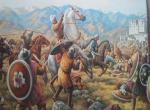
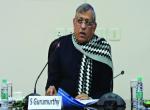
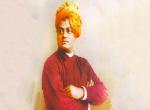
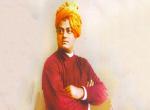
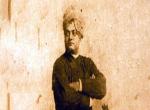
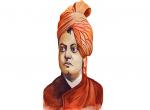
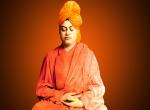
Post new comment